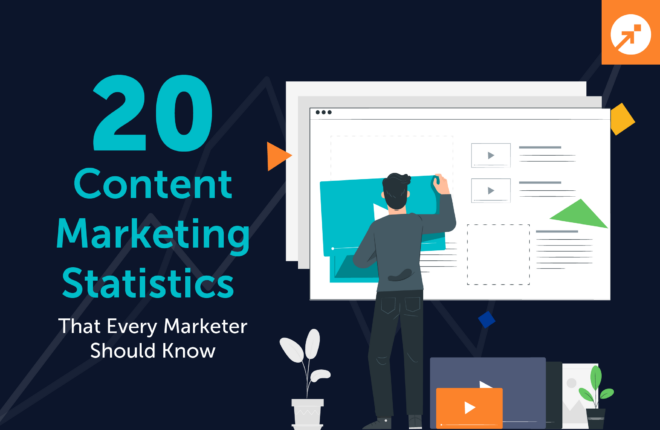TOFU (top of funnel), MOFU (middle of funnel), and BOFU (bottom of funnel) are acronyms for key sections of the buyer’s journey. Customers have different levels of knowledge, intent, and approach at every sales funnel stages. As they move into different mindsets as they progress from a wide understanding of the goods and solutions to making a buying decision.
While the three sales funnel stages are different, there is one common element – lead/ prospect nurturing at the core of each sales funnel stages.
This article will help you understand the difference between the TOFU, MOFU, and BOFU stages as well as guide you on the right content offerings for each sales funnel stages.
Diving Deeper: What is TOFU, MOFU, and BOFU
1. Top of the Sales Funnel: Awareness and Discovery (TOFU)

Early in their journey, your potential customers face a particular challenge and are reading and learning about it.
At this time, they are still determining their challenge. They have a lot of questions because they haven’t yet identified their key problem. They are, however, aware of the signs and symptoms. They seek trusted sources of data for education and try to verbalize their issue.
Here are some examples of issues they may have for various industries:
- If your prospects operate an educational institution, they can look into online education, its advantages, and the reasons for fewer admissions, among other things.
- If the prospects are banks or financial institutions, they might be looking at existing or proposed laws and regulations.
- If your prospects are in the IT industry, they might be looking at the problems that come with emerging technology or security threats.
At this stage, your cold prospects receive their first touch. More importantly, they are now your leads. It’s time for your sales reps to filter and qualify your leads for the next stage.
2. Middle of the Sales Funnel: Researching Solutions
You no longer deal with nameless and faceless contacts when the prospects reach the center of the funnel (MOFU). They’ve identified and established their dilemma, and are now searching for solutions in the form of products and services.
Middle-of-the-funnel questions aren’t the same as the top of the funnel.
If we keep using the TOFU examples, their questions will become more complex:
- The education sector will face challenges in managing and implementing online classrooms or digital learning.
- In the finance and banking industry, prospects will look for ways to stay in line with new laws and regulations.
- In the IT sector, prospects will look for ways to reduce operating costs or protect themselves from emerging security threats.
Your leads are prepared at this point because you have the opportunity to speak with them and ask them questions that will help you determine whether your approach is a good match for their dilemma.
3. Bottom of the Sales Funnel: Making a Purchase Decision
Finally, your leads have clearly identified their dilemma, have been informed on the best solutions for them, and are ready to select the provider that will alleviate their pain points. They have reached the bottom of your funnel.
As a result, their questions and concerns are now focused on the vendor. As a result, their online searches and questions might look like this:
- Which vendor has a superior solution?
- How do Vendor A and Vendor B directly compare?
- Who has previously completed a similar project/solution?
- Who has more positive feedback?
The list goes on and on.
This is the stage where your Qualified Leads go through the proposal and negotiation stages, in which you either win or lose the contract.
To master every stage, you need to take a focused content approach based on the intent of each stage.
Offering the Right Content at Each Stage
TOFU
TOFU content should be purely educational and should not include anything even vaguely related to a sales pitch. The buyer simply isn’t ready for one at this point, as many are still trying to fully understand what problem they have. So don’t sell your company or product. Just provide helpful information about their question or pain point.
The content and channels that are best suitable for TOFU include:
- Informational blogs
- Best practices
- Infographics
- Videos
- Updates on social media
- Podcasts
- Webinars
- eBooks
- Checklists
- Email marketing
For instance, if your business sells a CRM, a TOFU offering might be How Unorganized Data Leads to Lost Revenue.
When you are ready with the content, identifying the right prospects to consume that content becomes crucial. SalesIntel gives you access to millions of human-verified B2B contacts as well as the information you need to reach out to your future customers.
If you have outdated CRM data or a lack of inbound data stopping you from creating tailored content for your potential accounts. SalesIntel will help you enrich your B2B data by filling in the gaps and replacing inaccuracies with human-verified data. You can use emails to meet decision-makers and encourage content that answers their business issues in this way.
MOFU
Once your lead has passed through the TOFU stage, that means they have dived deeper into their pain area. They have a fair understanding of what exactly is stopping them from their desired results. Here’s when you need to offer MOFU content.
Your content should continue to inform, but it should also begin the process of positioning your business as the answer to the lead’s problems. You want to assist leads in determining their buying criteria in this content. You’ll also want to show why your products or services are the right options by demonstrating what matters most to product/service satisfaction.
Some of the best content and content formats that you can consider offering:
- Listicle articles such as top 10 tools/ products/ strategies/ Tips to overcome a challenge
- eBooks
- Webinars
- Whitepapers
- Case studies
- Webinars
- Paid ads
- Email marketing
Case studies can be used in MOFU as well as in BOFU. However, you need to present the case studies with a different intent in both stages. You can present a case study about how a company came out of a specific challenge, but always remember that when you are creating MOFU content YOU should be secondary. Give less emphasis to pitching your product and product features.
MOFU needs a more specific approach to your messaging. SalesIntel provides you with additional information such as technographic and firmographic filters to help you prioritize your ideal customers. This data helps you to qualify the leads from TOFU to MOFU based on company size, industry, the technology they use, and more.
BOFU
BOFU is your final stage and the most crucial one as you are going for the sale. At this point, your leads are familiar with you and feel comfortable conversing with you one-on-one.
This is the stage where you will be talking and offering content about YOU as a company. How are you better than the competitors? How have you helped your clients to overcome their problems using your expertise? Battle cards will come into play here and help potential buyers in comparing products, services, and companies. Why should they choose you?
Following content and formats would be ideal for BOFU:
- Case study with your business as the hero
- Battle cards comparing you vs your competitors
- Free trial offers
- Product demos
- Freemium offers
You can prepare a battle card comparing your product with the one that your potential buyer is using. Our buyers often compare us with ZoomInfo. So, we share our battle card – ZoomInfo vs SalesIntel – which makes it easier for them to make the decision.
One major challenge in this stage is reaching the decision-maker. Lager enterprises often have decision committees. Even if you have identified who are the decision-makers, sometimes getting a response from them is another challenge. Here’s when SalesIntel’s direct work mobile numbers play a vital role. According to a ScaleX report, sales reps who use SalesIntel job mobile numbers are 7x more likely to communicate with decision-makers, making it easier to contact and close bottom-of-the-funnel deals.
Long story short, you need to prepare what content you offer and how you will offer it for each sales funnel stages.
Content and Data are the Heart and Brain
The brain works analytically, and the heart forms an emotional connection. The right balance of both is required. Similarly, content is the heart that connects your audience with your brand, and data is the brain that tells you to take action by analyzing the situation. Both are important to sustain. If you have data but not the right content, you won’t win over leads. If you have the content but are not reaching the right audience, there won’t be anyone to win over.
So, you can focus on creating the right content, and we will help you with the right data to identify and reach your potential buyers. Filter and find your audience using firmographic, technographic, and buyer intent data.






